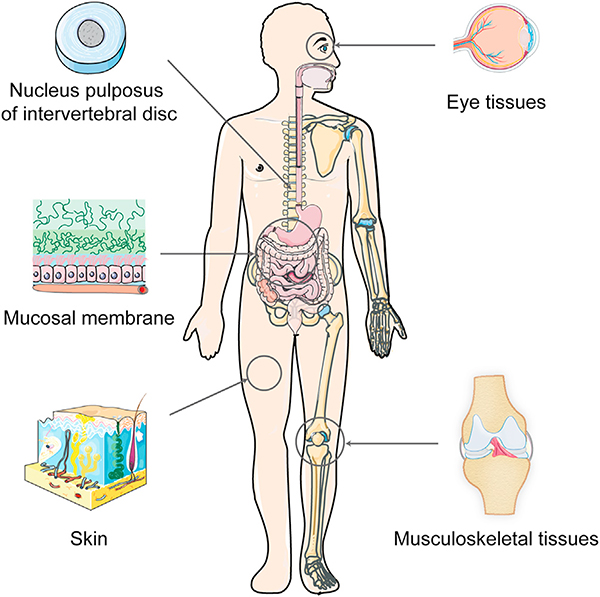Fig. 1.
Negatively charged tissues in the human body remain an outstanding challenge in the field of targeted drug delivery. Examples include musculoskeletal joints(shoulder, elbow, knee, hand and ankle) comprising of tissues like articular cartilage, synovial joint, ligaments, tendons and menisci; nucleus pulposus of the intervertebral disc; eye tissues like the cornea and vitreous humor; mucosal membrane; and skin comprising of multiple layers of negatively charged cells, collagen, proteoglycans and elastin. This high negative FCD can be used to enhance intra-tissue transport, uptake and binding of locally injected drugs or their carriers via electrostatic interactions by modifying them to contain optimally charged cationic domains.

